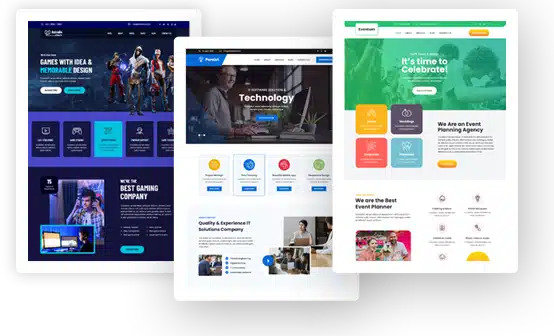How to Write Website Copy That Converts Without Sounding Salesy

As a business, communication with your clients and customers happens primarily through written copy. It’s on your website, in your emails, in your ads, and much more. It’s so important to get it right, and yet incredibly easy to get it wrong. The modern shopper is extremely resistant to traditional “salesy” copy, and if you don’t adapt to this, you will see your ROI suffer.
Instead, successful brands focus on crafting “connection copy,” which aims to build relationships with individuals and provide value even outside of sales. Rather than pushing for a speedy conversion, this style of copy aims to raise awareness of your brand and build trust. In this article, we’ll show exactly how connection copy is written and how it outperforms salesy copy in just about every metric.
How to Write Non-Salesy Copy
There are a lot of different elements to connection copy, but before we get into how it’s done, let’s dig into exactly what it’s trying to achieve.
As accurately described by Instantly Co-Founder: “Far too many senders treat cold email as an attention-getting game. It’s really not. You’re asking to start a dialogue with someone who doesn’t know you. If your message doesn’t feel relevant, respectful, and genuinely worth their time, you haven’t earned the right to speak, let alone sell.”
A business should exist to bring value to its clients and customers, but the public also knows that some businesses exist only to force sales however they can. Connection copy is all about showing people that you respect your customers, and your end goal isn’t simply snagging a sale; it’s achieving customer satisfaction.
1. Know Your Audience
Understanding who you’re selling to is the first step toward crafting non-salesy copy. The reason for this is simple: to show potential customers that you can provide value to them, you need to know what they need and why they need it.
To understand their audiences, companies conduct user research. At bigger organizations, there are whole teams dedicated to this endeavor, and they take it very seriously. Common methods of user research include:
- Focus groups
- Interviews
- Surveys
- Diary studies (participants trial a product and write a diary about their experiences)
- Usability testing
- Field studies (observing users in their own environment rather than the office)
- User personas
- A/B testing
Once you have a mountain of information about your ideal customer and their needs, preferences, and behavioral patterns, the idea is to craft copy as if you were speaking directly to that individual.
This instantly makes your copy sound more personal, human, and empathetic, which is what customers want to hear. It will also focus the content of your copy in the right direction, showing customers what your product does and how it can solve their problems.
2. Don’t Just Sell Products, Offer Solutions
Connection copy isn’t just about what you say; it’s also about what you do. The goal is to build brand loyalty by providing value to customers, but not all of that value should be hidden behind a paywall. While selling your products is the end goal, you should also create content that answers customer questions and helps solve smaller problems without requiring payment.
Phrasing it this way might sound a little extreme, but this is a normal part of any sales funnel and content creation strategy. The most common example is blog posts that share insights into topics related to your products. They don’t push your products directly, but they are a part of your website and encourage readers to explore further.
As you progress further down the funnel, your content will start to push products directly, but the focus on “solutions” still applies here. Don’t just list the trademarked names of your product’s many features; frame your points around how they solve problems and what kind of problems they can solve.
3. Always Write with Authenticity and Clarity
No end-user or customer wants to hear sales talk; this is just a fact of modern marketing. They want natural, humorous, and conversational tones that explain things in clear and simple terms. A catch-all term for this kind of style is “authentic” because it feels like real communication between humans.
Authenticity and clarity go hand in hand. You won’t be able to pull off authentic copy if you’re constantly trying to disguise certain facts or mislead customers with overly technical language. Always prioritize clear, simple language that gets your point across and leaves minimal room for misunderstandings or alternative interpretations.
If a user comes away thinking, “Do they mean this, or this?” it will not work in your favor; it will only encourage doubt and distrust.
4. Build Trust with Social Proof

As mentioned, connection copy is a mix of words and actions. To support the things you say, you should display real-life examples. This is called “social proof,” and it comes in a few different forms:
- Customer testimonials
- Reviews
- Case studies
- User-generated content
- Trust icons (such as “as seen in”)
- Data points (e.g., number of customers/users)
5. Guide the Next Step with a Clear Call-to-Action (CTA)
Although it takes a very different approach, the goal of connection copy is still to drive leads further down the sales funnel. In other words, you can’t just “talk solutions” to your customers and not give them a direct link to said solution. That’s why your copy should still include clear CTAs that are appropriate and relevant to each specific kind of content.
Your goal is to guide users to the next step of the funnel, and the next step might not be making a purchase, so you can’t just end everything with “Click here to buy.”
Final Thoughts
Writing non-salesy copy isn’t difficult once you understand the goals and common practices. Every marketer and copywriter is also a user and a customer, and it’s easy to read your copy back and imagine how you’d respond to it as a consumer. Writing as if you’re talking directly to another person is also a much more natural experience than trying to put together traditional sales copy, and once you get used to connection copy, you’ll probably never go back.

